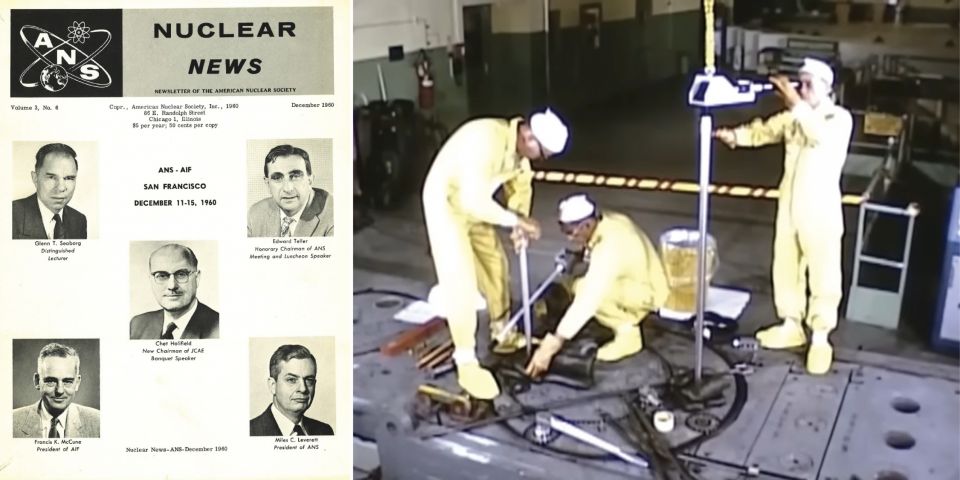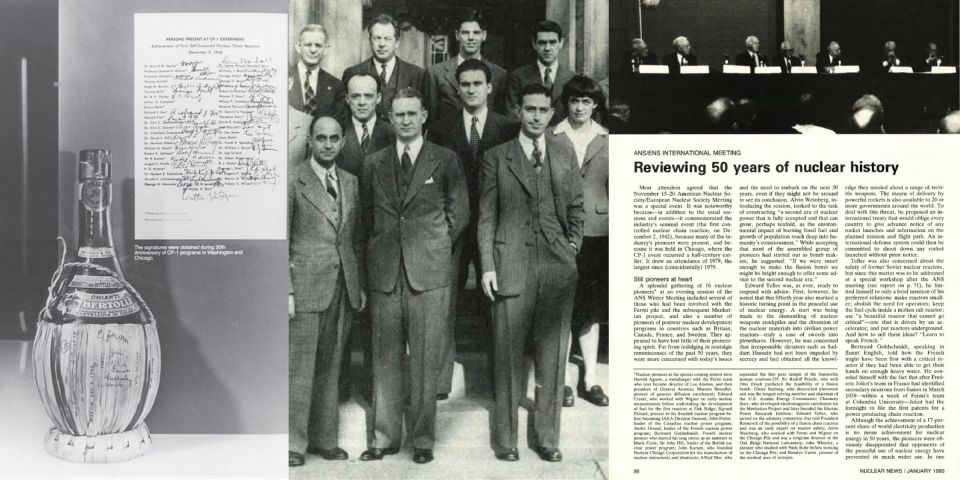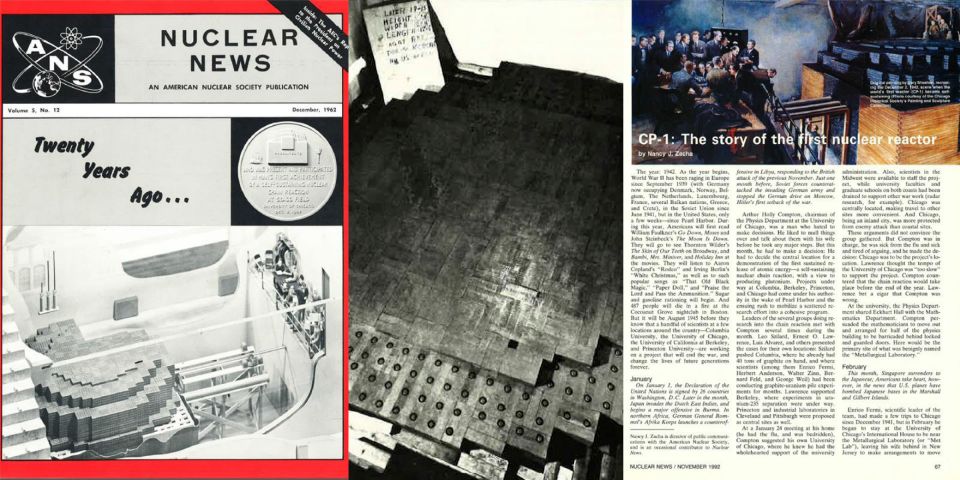Virginia ANS section discovers hidden asset - Clay Condit
On January 31, 2013, about 30 lucky members of the Virginia section of the American Nuclear Society heard a series of informative tales from one of the many innovative pioneers of the First Atomic Age. Clay Condit, a man overflowing with personal memories of important nuclear energy milestones-like the initial start-up of the Submarine Thermal Reactor and the post accident analysis of the SL-1 tragedy-entertained the assembled members for a little more than an hour.
Clay retired from Westinghouse in 1992 after a 40-year long career in nuclear reactor physics and reactor operations. He spent most of that time at the 900-square-mile piece of the Idaho desert currently known as the Idaho National Laboratory. That site has been the home of 52 nuclear reactors.
Some of those reactors were carefully designed and maintained facilities used to develop new fuel materials, test new operational concepts, and/or train sailors for the US Navy. The Materials Test Rector (MTR), the Submarine Thermal Reactor (STR), the A1W prototypes for the USS Enterprise, and the Advanced Test Reactor fell into that category. Those facilities have provided decades of useful service, provided important practical training for more than 40,000 sailors, and have enabled such technological improvements as submarine reactor fuel designs that now last for the 33-year-long life of the ship instead of the two-year life achieved by the first core of the USS Nautilus.
Some of the other reactors built at INL-like the Integral Fast Reactor that evolved from the Experimental Breeder Reactor II-were also well-designed and maintained facilities that point the way to a reliable source of inexhaustible clean energy.
However, some of reactors built at the National Reactor Testing Station (one of INL's former names) were rapid prototypes that were built quickly to test innovative concepts, some of which did not work out as well as the designers had hoped. As Clay explained, in the early days of the facility, there were two primary rules. First of all, any new project needed to pick a location that was at least five miles from any existing facility; secondly, the operators of any test reactor were required to notify the local sheriff to divert traffic on the through roads whenever they were conducting testing that might result in the release of any radioactive material.
From Clay's point of view, the ability to move quickly and develop conceptual designs into operating machinery with few restrictions within the facility played an important role in the rapid improvement in nuclear energy technology. He stated that we need to find a way to reinvigorate nuclear technology development by reusing some of our existing assets of open spaces and readily available human resources.
After his retirement, Clay started devoting a major portion of his time to capturing and sharing knowledge about Idaho's importance in the development of nuclear energy. He was instrumental in convincing the US Navy to donate the sail of the USS Hawkbill (SSN 666) to the town of Arco (the first community in the world ever to be lit by electricity generated by nuclear power), Idaho, so that it could serve as the cornerstone of the Idaho Science Center. Clay is the founder, president, and primary tour guide of that facility, and he has been working for about a decade with other Arco boosters and INL veterans to create a destination where artifacts and stories about nuclear energy development at INL can be preserved and shared.
Talks like the one that Clay gave might be common for chapters that are near the national labs, but it was a unique experience for many of the Virginia section attendees, especially those who have never had the chance to attend ANS national meetings. Fortunately for us, Clay winters in Richmond; I hope we can convince him to be a more regular attendee at our meetings.
For show and tell, Clay brought a collection of artifacts and handouts, including a copy of a book titled Proving the Principle - A History of the Idaho National Engineering and Environmental Laboratory 1949-1999. I highly recommend reading the online version of that book; it provides a fascinating look at the history of a dynamic facility peopled by thinkers whose achievements were often shrouded in secrecy.
I've read Proving the Principle, but Clay's talk added depth and personalized some of the events. One of the real benefits of participating in local ANS sections is the opportunity to hear interesting stories from people with real world experiences that may never again be repeated.
Of course, speakers are not the only reason to attend ANS local section meetings; it is also good to swap stories with other people who share some of the joys and challenges of working in our profession.
There was a little bit of depressing news broken at the meeting. On January 31, the day that we met, local news sources reported that Virginia state Senator John Watkins withdrew his bill to end the existing moratorium on uranium mining. The diverse coalition that has formed to halt the development of one of the largest known deposits in the United States has-so far-successfully convinced political decision makers that uranium mining entails too much risk and too little reward. There has been a well-orchestrated campaign of misinformation that has not been effectively addressed by people who understand the minuscule level of public risk associated with properly regulated, modern uranium mines and the substantial rewards that can come from developing valuable fuel sources.
There is a glimmer of hope that Virginia's governor will use his authority to allow state regulators to begin drafting rules so that legislators will be able to make more informed decisions about the protections those regulations will provide to local populations. I hope that the governor pays attention to the careful work that has already been done to address the scientific questions. He should recognize that a deposit of material that could provide 20 percent of the United States with emission-free electricity for more than 2 years is worth developing. Perhaps it will help if more people who understand the technology find their voices and begin more forcefully communicating accurate information.
Governor McDonnell believes that Virginia should become the "Energy Capital of the East Coast". That is a worthy goal that will be easier to reach by expanding our already substantial nuclear energy competence to include mining the required fuel material.
____________________________________

Adams
Rod Adams is a nuclear advocate with extensive small nuclear plant operating experience. Adams is a former engineer officer, USS Von Steuben. He is the host and producer of The Atomic Show Podcast. Adams has been an ANS member since 2005. He writes about nuclear technology at his own blog, Atomic Insights.








